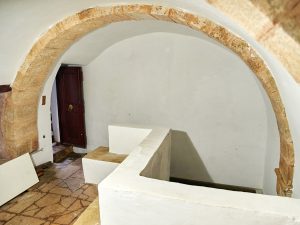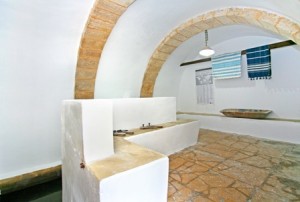Note for Jewish visitors: The Mikveh is accessible and can be used only during the opening hours of the Synagogue; you can find them here. Please note that we cannot provide an attendant (shomer). Please also bring a towel.
.
***



Note for Jewish visitors: The Mikveh is accessible and can be used only during the opening hours of the Synagogue; you can find them here. Please note that we cannot provide an attendant (shomer). Please also bring a towel.
.
***
A Mikveh is a bath used to attain ritual cleanliness which is an important aspect in the Jewish tradition. According to Rabbinic law, the Mikveh must be connected to a natural spring and hold enough water to cover the entire body. Many rules regarding the usage of the Mikveh vary greatly between different traditions, but generally, it is used before high holidays and marriage, after menstruation and childbirth, and as part of the ritual of conversion to Judaism. The Mikveh of Etz Hayyim is one of the oldest functioning ritual baths in Greece. It was probably built sometime in the 17th century and is fed by a natural underground spring which, after supplying the bath, flows into the sea. The Mikveh was also used by the congregation of Beth Shalom Synagogue (destroyed in 1941).
.
Since the Mikveh was a repository for rubbish for decades following the deportation of the community in 1944, at the time of its restoration, the bath contained a large volume of thick sludgy material that occasionally overflowed into neighbouring properties and was even considered to be the place where a large snake lived, as a “hissing” sound could frequently be heard by neighbours. All of the rubbish and debris which had accumulated over fifty years and had stopped the water flow from the spring was removed, and after several months of intensive restoration and cleaning, it was transformed once again into a proper ritual bath that any visitor to Etz Hayyim may use.